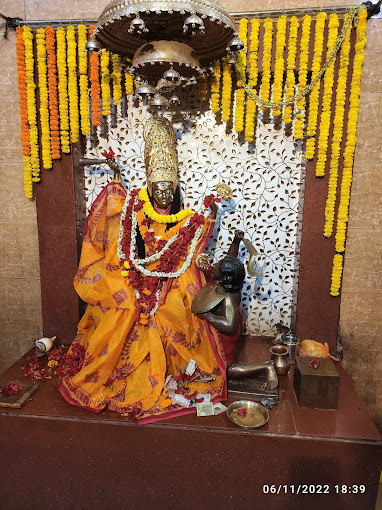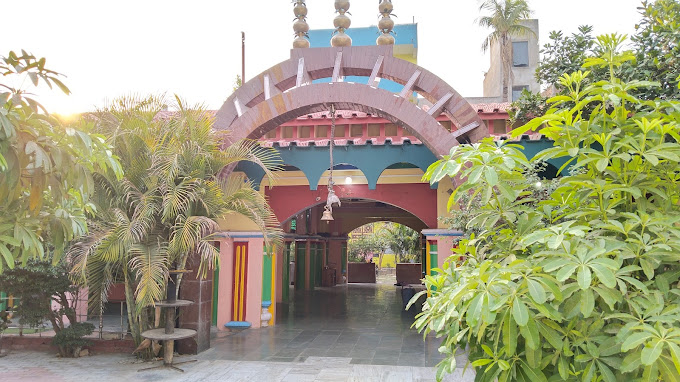Inside Temple

The interior of the Bangla Sthan Temple in Gaya exudes an aura of serenity and spiritual significance. As visitors enter, they are greeted by a sense of calm and reverence. The temple's sanctum houses the idol of Goddess Bangla, a form of Goddess Durga, depicted in a majestic yet peaceful posture. The idol is adorned with vibrant garlands and offerings, creating a colorful contrast against the temple’s ancient stone walls. Devotees often surround the deity with prayers, chanting hymns and mantras, seeking blessings for strength, protection, and spiritual growth. The temple's architecture is a blend of ancient and classical styles, with intricate carvings on the walls that depict various scenes from Hindu mythology. The ceilings are beautifully decorated with motifs of lotus flowers and divine symbols, adding to the temple's sacred atmosphere. The interior is bathed in soft, natural light filtering through small windows, enhancing the peaceful and meditative environment. Around the idol, sacred offerings of flowers, fruits, and incense fill the air with fragrance. The temple is a place of quiet reflection, where devotees engage in individual prayers or participate in collective rituals. The atmosphere is one of devotion, where the energy of centuries-old traditions continues to flow, making it a powerful spiritual destination.
Other Attractions
Apart from the main Bangla Sthan Temple, the surrounding area in Gaya offers several noteworthy attractions. The **Phalgu River**, which flows near the temple, is a significant spiritual site where pilgrims gather to perform ancestral rites. It is believed that a dip in the river purifies the soul and helps in achieving salvation for ancestors. Another important site nearby is the **Vishnupad Temple**, dedicated to Lord Vishnu. This temple is famous for housing the sacred footprint of the deity, a symbol of divine presence. Many pilgrims visit both temples to complete their religious rituals. The **local markets** around the temple are vibrant, offering a wide range of religious offerings, flowers, and traditional snacks.

Distance From
Gaya Railway Station
The distance from Gaya Railway Station to Bangla Sthan Temple is about 7 kilometers, taking around 15-20 minutes by car.

Gaya Airport
The distance from Gaya Airport to Bangla Sthan Temple is approximately 10 kilometers, taking around 20-25 minutes by car.

Gaya Bus Stand
The distance from Gaya Bus Stand to Bangla Sthan Temple is approximately 5 kilometers, taking around 10-15 minutes by car.

Our Review
Bangla Sthan Temple in Gaya offers a serene and spiritually enriching experience. The temple, dedicated to Goddess Bangla, is a place of peace and devotion, drawing pilgrims who seek blessings for strength and protection. The surroundings, including the sacred Phalgu River, enhance the spiritual atmosphere, making it a perfect place for prayer and reflection. Visitors are captivated by the temple's peaceful vibe and beautiful architecture, with intricate carvings and a calming ambiance. The local markets nearby add a cultural touch, offering religious items and traditional offerings. Overall, Bangla Sthan Temple is a must-visit destination for anyone seeking a blend of spirituality, history, and tranquility.
